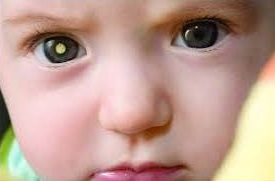
While over 95 percent of children are cured of retinoblastoma, a malignant tumor of the eye, the Hadassah University Medical Center’s specialists are focusing on the quality of life (QOL) issues that plague these young patients.
Among the problems the children face are loss of an eye or vision in the eye, as well as second cancers. A national referral center for retinoblastoma, Hadassah, with its multidisciplinary team of an ophthalmologist, pediatric oncologist, social worker, and nurse, currently follows close to 200 children and adolescents with the disease.
In a recent study, Hadassah researchers assessed the quality of life for 46 children and adolescent survivors of retinoblastoma. While the results indicate that children who are survivors of retinoblastoma have an overall QOL that is similar to other children their age, the authors note that “subgroups of survivors appear to have unique difficulties that require continued follow-up and intervention.” The children’s parents, they found, rated their children’s general and emotional health as being lower than what would be expected of a normal child in their age range. In addition, the children reported lower QOL as related to school. Further, those children who suffered from bilateral retinoblastoma (a tumor in both eyes) participated less in daily activities and had a lower emotional quality of life, as compared to those who only were affected by the disease in one eye (unilateral retinoblastoma). When a child had his eye removed, he was likely to suffer from lower self-esteem. (See “Participation in Daily Activities and Quality of life in Survivors of Retinoblastoma” in the April 2011 issue of Pediatric Blood and Cancer.)
The next phase of the study will focus on adolescent survivors of retinoblastoma, particularly those who had an eye removed and now have a prosthesis, which has caused them major concerns about their appearance and social acceptance. Further research will investigate the issue of body image and social acceptance in general among survivors of retinoblastoma. The aim, explains Dr. Michael Weintraub, Director of Hadassah’s Pediatric Hematology-Oncology Department, “is to assess the extent and severity of the problem and then design a specific intervention program for the adolescents that will be based on both individual and group support.”
Hadassah researchers also plan to look into the impact of monocular vision on the motor and functional development of infants and young children who are survivors of retinoblastoma. Preliminary data from the QOL study suggests that these children may have difficulties with motor coordination, affecting their ability to participate in age-appropriate sports and play. By the same token, they have problems performing daily activities that involve vision–for example, crossing the street safely—if they have lost part of their visual field. Without an eye, these children cannot see a car approaching from the side. Once they assess and characterize the loss of vision-related function, the Hadassah team plans to design an intervention program to address these difficulties.
